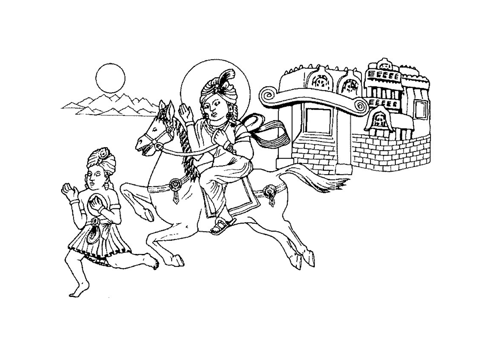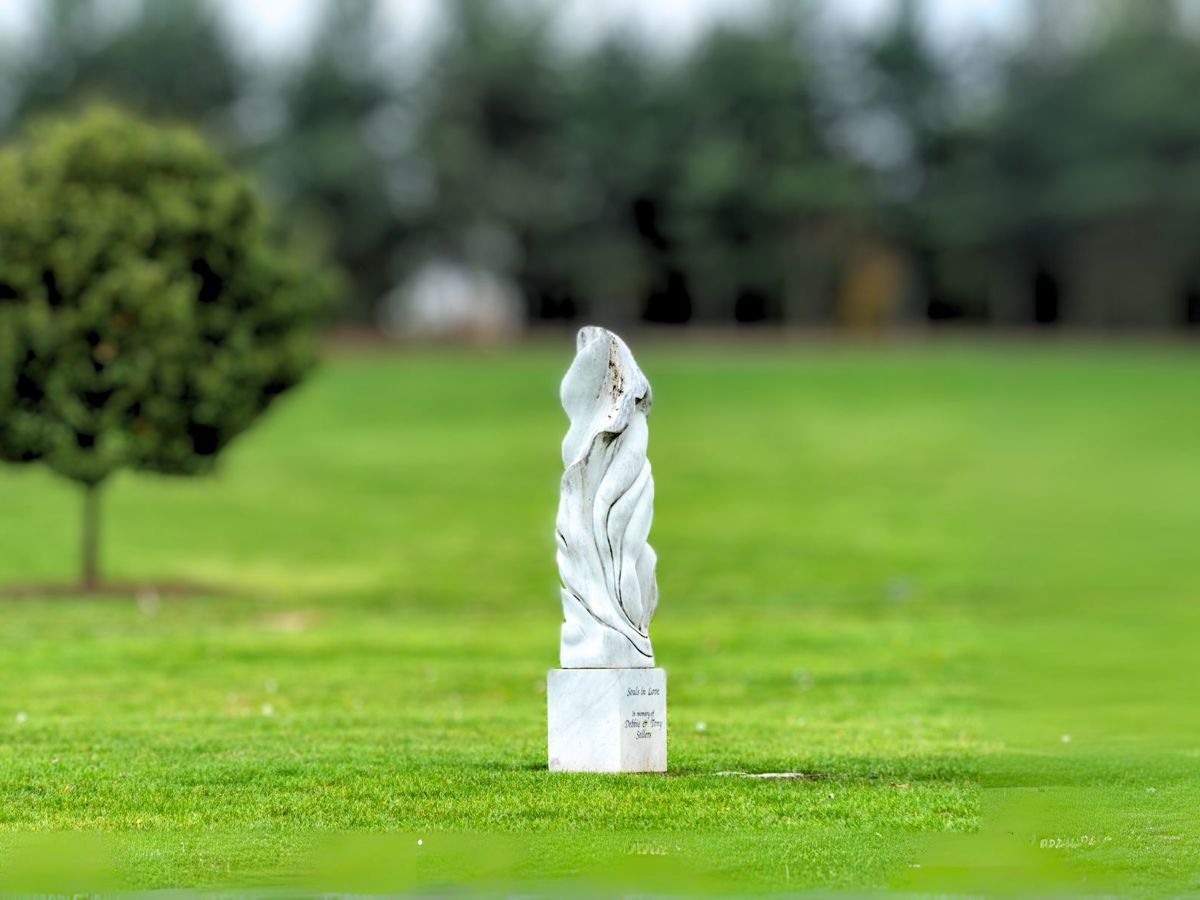
Milton Keynes Peace Pagoda
Minoru Okha and Tom Hancock (1980)
The first of its kind in the Western hemisphere, the Milton Keynes Peace Pagoda was built by the monks and nuns of the Nipponzan Myohoji, a spiritual movement that promotes pacifism (non-violence). Local people also took part in the building, helping to create a sense of community in the early days of Milton Keynes.

Peace Pagodas are traditional buildings of the Buddhist faith, created to symbolise and promote peace and unity of all people. The tradition was revived in Japan after the horrors of World War II. A Peace Pagoda was built in each of the cities of Nagasaki and Hiroshima where atomic bombs had been used for the first time in warfare. Over 140,000 people had been killed in Hiroshima alone, and the threat of nuclear war was a real possibility. The movement created pagodas in Asia, Europe, and the United States to spread the message of world peace. There are over 80 around the world.
The ridge surrounding the Peace Pagoda and the nearby Temple was originally planted with 1000 Yoshino cherry trees donated from Japan. Sadly, the local conditions were unsuitable, so almost all the trees died. The Parks Trust is gradually planting more suitable cherry species and we hope that, in the future, a season of stunning cherry blossom will be enjoyed by visitors to the park.


The Buddhist Temple nearby welcomes visitors and is a great place to learn more about the Temple and the Peace Pagoda.
The Buddhist nun and volunteers hold services and annual events such as Hiroshima Day on 6th August. The aim of this event is to promote peace and unity, commemorating the dropping of the first atomic bomb in a way that brings the community together and encourages peaceful methods. Although it is led by the Buddhist Temple, it is open to all people of all faiths and none. After chanting and speeches, everyone wanders down to the lake, and one of the monks floats lanterns made by local school children across the water (see the photo on the left).
Please see their Facebook Page or noticeboard, or knock on their door to speak to one of their volunteers.
You are very welcome to explore the Peace Pagoda. We ask people to be respectful around this area.
The Peace Pagoda Frieze
The frieze around the Peace Pagoda tells the story of Buddha from his birth 2,500 years ago at the foot of the Himalayas to his death at Kusinagara after 50 years of teaching. Below are images of each scene with a description of what it shows.

The Birth
Prince Siddhartha, whose name means 'every wish fulfilled', was born in the Lumbini garden at the foot of the Himalayas more than two thousand five hundred years ago.

The Great Renunciation
Prince Siddhartha grew up in the luxury of his father's palace. One day, when he had grown up, he decided to leave the palace and explore. What he saw made him realise that life is full of suffering through sickness, old age and death. Nothing ever remains in permanent peace and happiness. He decided to abandon his kingdom and all his comforts. As a homeless wanderer, he searched for enlightenment so that he could free all living beings from this endless suffering.

The Defeat of Mara
In his long search for Wisdom, he studied with religious men, but this did not give him the answers he sought. He mastered all spiritual teachings and devoted himself to self-torment, living in absolute poverty, always hungry and weak. But he discovered that this was not the way to Truth. Finally, he sat under a Bohdi tree in Gaya and vowed not to move until he attained Enlightenment and could fulfil his promise of saving the world.
The King of Mara, who rules the Powers of Evil, sent them to torment and corrupt Siddhartha but, touching the earth with his right hand, Siddhartha fought off these temptations.

Enlightenment
For three weeks Siddhartha, sat in blissful peace. During this time he became Enlightened as The Buddha. He decided to abandon the strict lifestyle of self-denial and ascetism, but did not return to the pampered luxury of his early life. Instead, he pursued the Middle Way; neither luxury nor poverty.
The Brahma kings and the gods who oversee the world arrived and greeted him. They encouraged him to share his ideas with others to bring peace to the world. Rather than worshipping one god or gods, Buddha set out the idea of a timeless wheel of teaching known as the Dharma.

The First Rolling of the Law Wheel
The Buddha loved the people like his own children. He decided to preach the Dharma. At the Deer Park near Sarnath, he gave his first sermon to the five men he had studied with before. This marked the beginning of the teachings of Buddha and the community of his disciples.

Bamboo Grove Monastery
The Buddha travelled and preached throughout India. In Maghad, he met a king who was so impressed with his teachings that he decided to become a follower. King Bimbisara gave the Buddha and his followers the Bamboo Grove Park as a place for their first monastery.

The Revelation of Myo-Ho-Ren-Ge-Kyo-On Divine Vulture Peak
After forty years of travelling and preaching, the Buddha gave his most important sermon to the great assembly of gods and his disciples at the Divine Vulture Park. He spoke of the unity of all religious teachings and everything that had ever existed. He promised that everyone would become Buddha. As he spoke a magnificent shrine appeared. It was dedicated to the former Buddha, called Abundant Treasure, who confirmed the profound truth of these teachings.
Together the Buddhas revealed their promise to save the world from suffering and to bring Eternal Peace.

Parinirvarna
After fifty years of teaching, the Buddha asked that a couch be prepared for him at Kusinagara. He wished to depart beneath flowering sala trees. Then he started on his journey.
At Kusinagara, surrounded by his disciples, he lay down on the couch and rested his head on his hand.
The birds stopped singing, the wind ceased and the blossom fell from the trees above him. The Buddha asked his disciples if they had any further questions. No one replied. Finally, he encouraged his disciples to follow his example.
He passed away, as flames ceased to burn. He remains forever in this world.

Willen Lake is one of Britain's largest purpose-built balancing lakes, spanning around 100 acres. It was created in the 1970's during the development of Milton Keynes to help prevent flooding. The park features two lakes to explore and has a wide range of activities on and off the water.
There are many cultural landmarks and public art pieces to explore at Willen Lake. In addition to the Labyrinth and Medicine Wheel, you will find the distinctive Buddhist Temple. The public is welcome to visit the temple when it is open. The village of Willen, with its church designed by Robert Hooke, is also on the edge of Willen South Lake.




